Hi, I’m Jinta from Japan.
This time, I ordered “Suka Pinakurat,” a coconut vinegar from the Philippines, and will review its actual taste.
When I was talking with a Filipino teacher in an online English conversation class, this “Suka Pinakurat” came up. We were just talking about Japanese soy sauce. I asked him if he knew of any traditional seasonings. He said,
Yes, coconut vinegar!
Coconut vinegar… Are you serious?
This unimaginable coconut vinegar is a traditional food in the Philippines. Is this true? I asked many teachers and found out that all Filipinos know about it (laugh).
I wondered if such a thing could be bought in Japan. I looked for it and found that it is usually sold by mail order!
So this time, I ordered coconut vinegar from the Philippines, and I’m going to try it for myself! I’m looking forward to it.
Let’s get started!
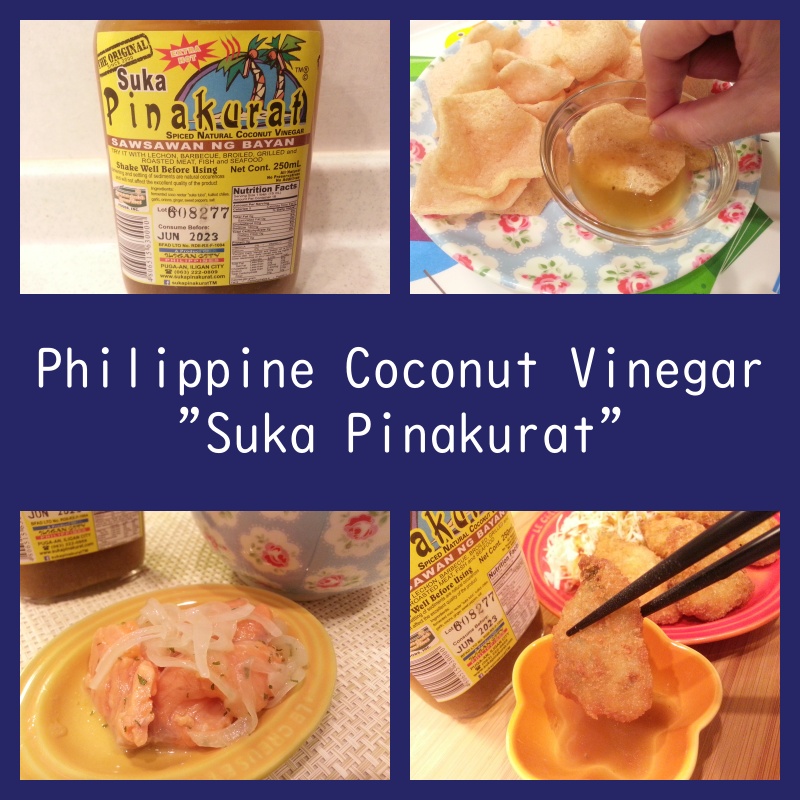
What is Suka Pinakurat?
Product Introduction
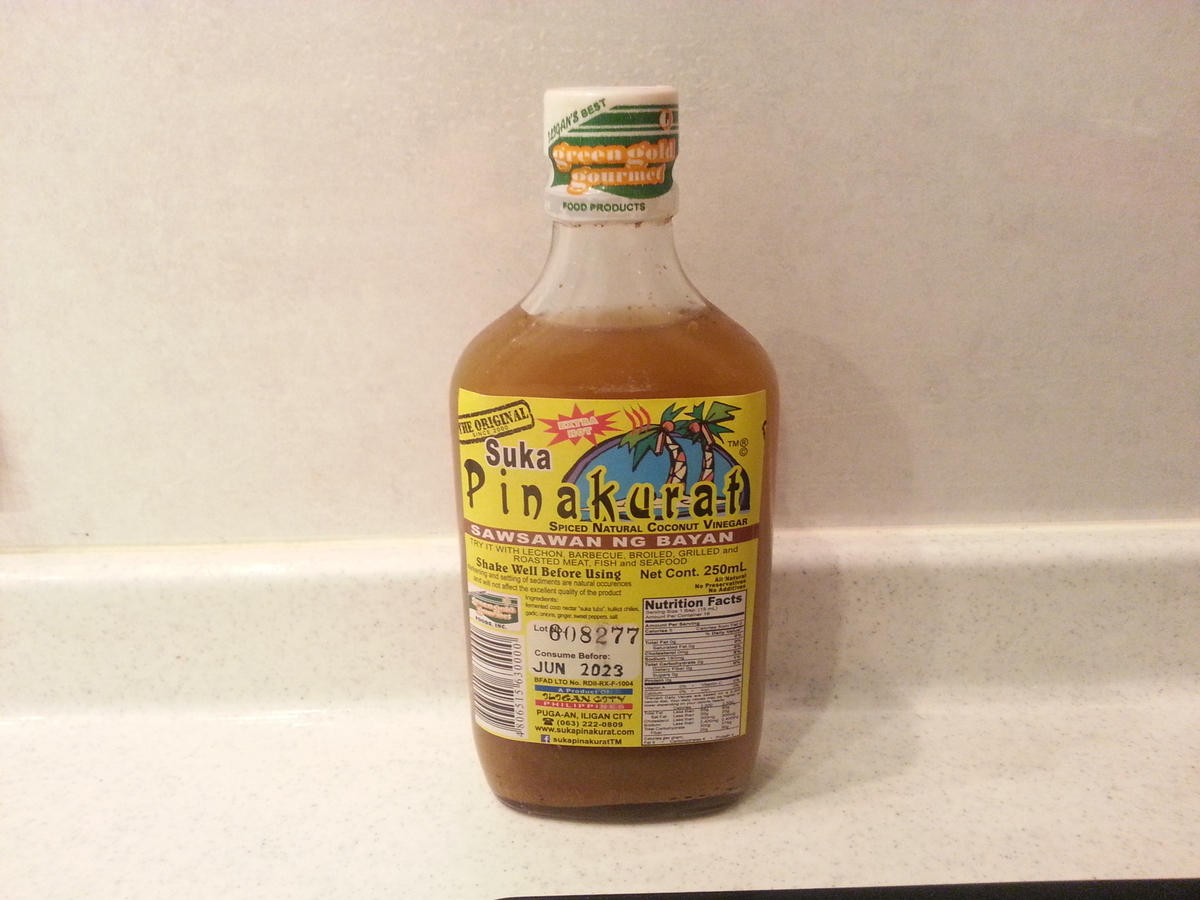
Suka Pinakurat originates from Iligan City, Philippines. It is different from Japanese rice vinegar. The main ingredient is coconut. It is a vinegar made by fermenting coconut sap. It is characterized by its pungent and peppery flavor rather than its acidity!
The English translation of the Visayan product name is
- suka:vinegar
- pinakurat:Surprised
It will be. It’s a surprising vinegar when you put it in your mouth. A little scary.💦
Ingredient
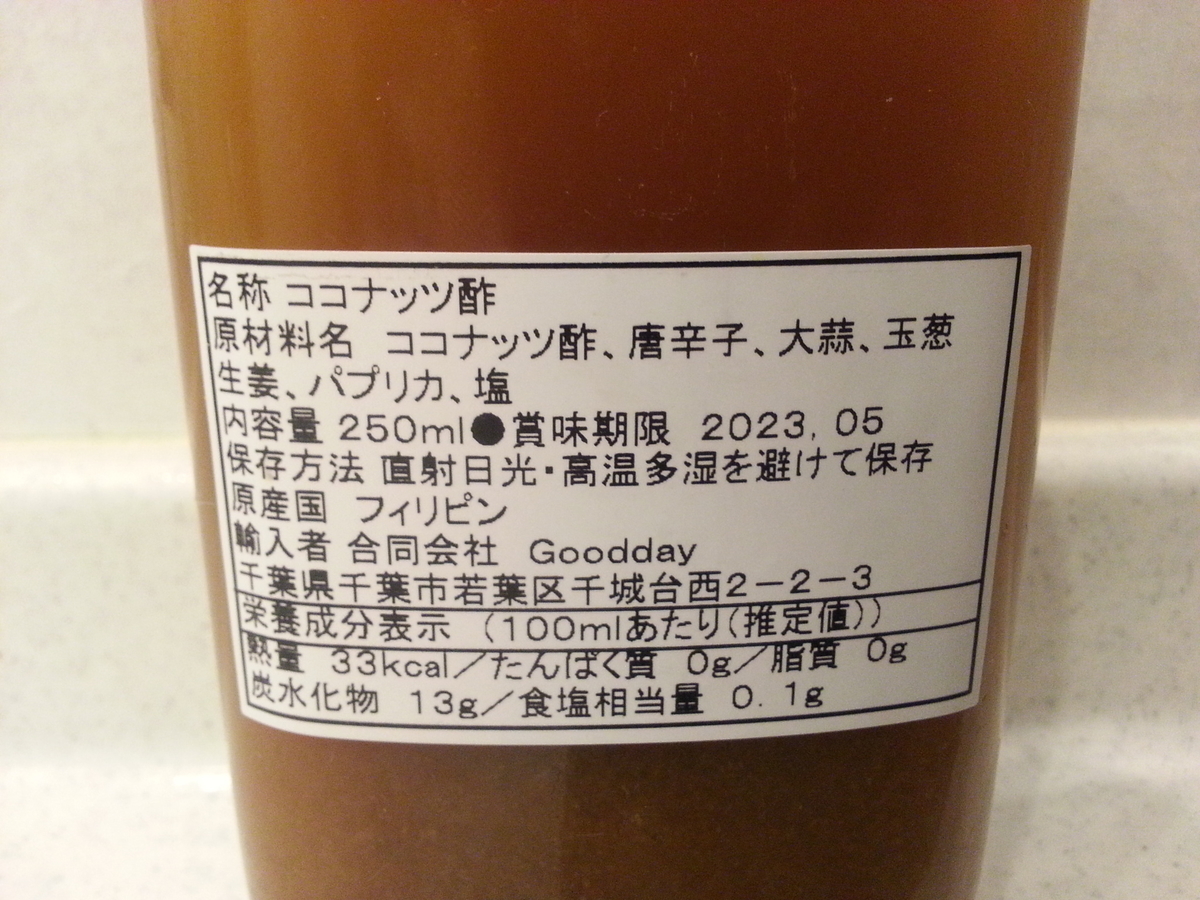
Transcribe the raw materials on the product label.
- coconut vinegar
- red pepper
- garlic
- onion
- ginger
- bell bell pepper
- salt
▼These raw materials will precipitate after some time, as shown in this picture. So they are firmly contained as solids. That is why you need to shake it well before use.
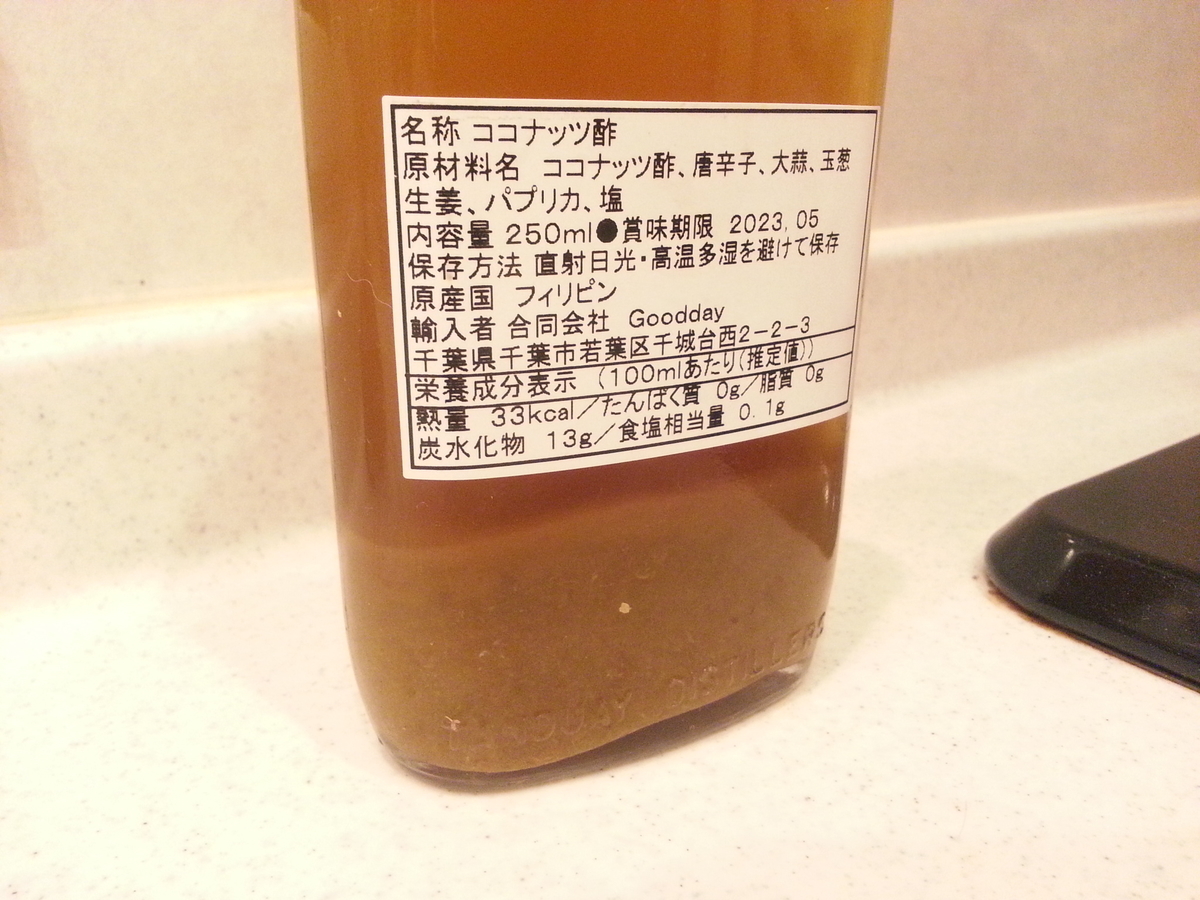
How to use
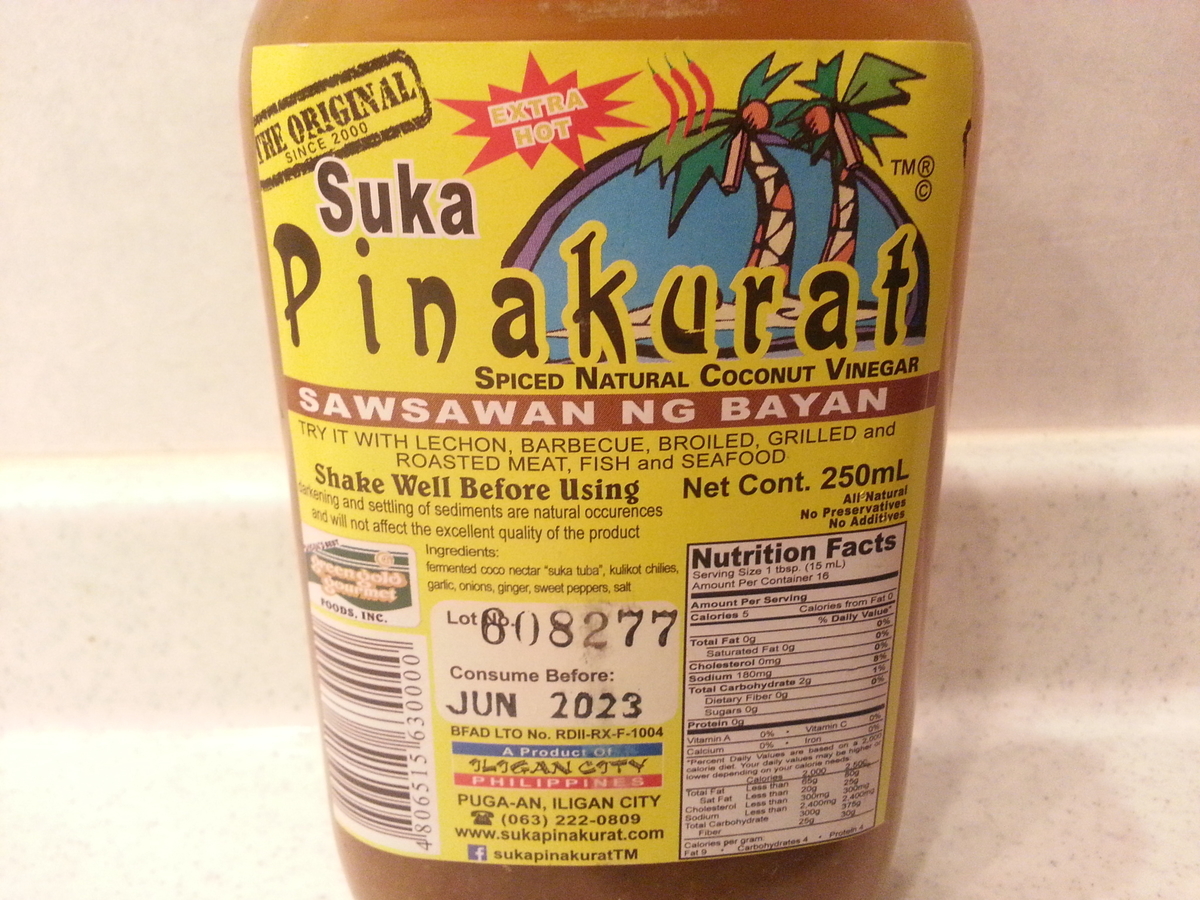
There is nothing difficult about it. It’s a dipping sauce kind of use. You dip your food in this sauce and eat it.
The label states the following.
Try it with lechon, barbecue, broiled, grilled and roasted meat, fish and seafood. Shake well before using.
Since I am taking an online English conversation course, I asked my Filipino teachers how to use it. And they answered as follows
- Lechon (roasted pork)
- Fried chicken
- Boiled meat
- Dried fish
- Marinated fish
- adobo
Moreover, it is said that the products introduced in this article are positioned to be bought with excitement. In many cases, they blend raw materials to make homemade products. Interesting.
Coconut Vinegar Tasting
I’ll take it out of the container and lick it as is.
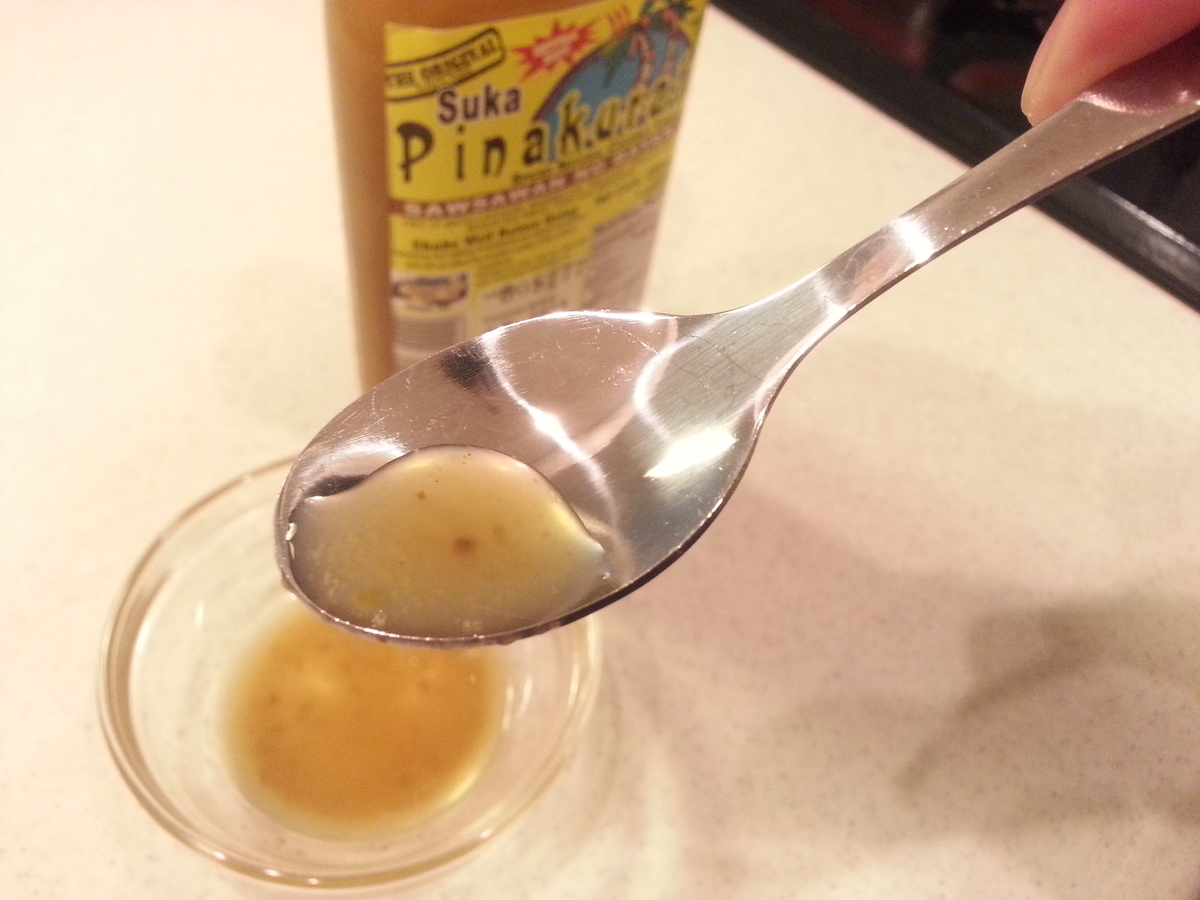
Spicier than I imagined! The spiciness of the chili pepper is very effective. The unique flavor is also exotic.
Coconut Vinegar Cooking
Now let’s try it with food. Although it is a dish, it can be used like a dipping sauce, so all you have to do is dip it in.
Fried chicken
I started with the standard fried chicken.
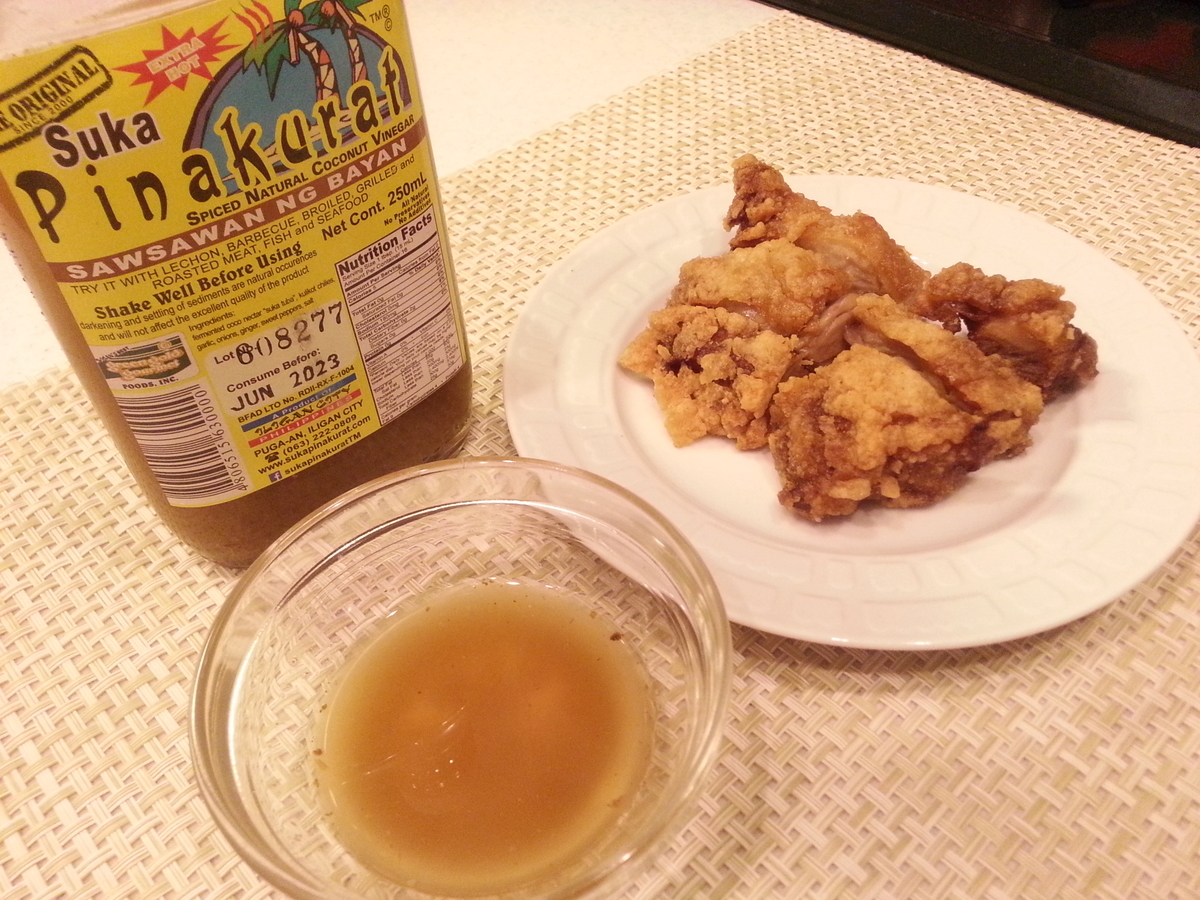
It will be served dipped.
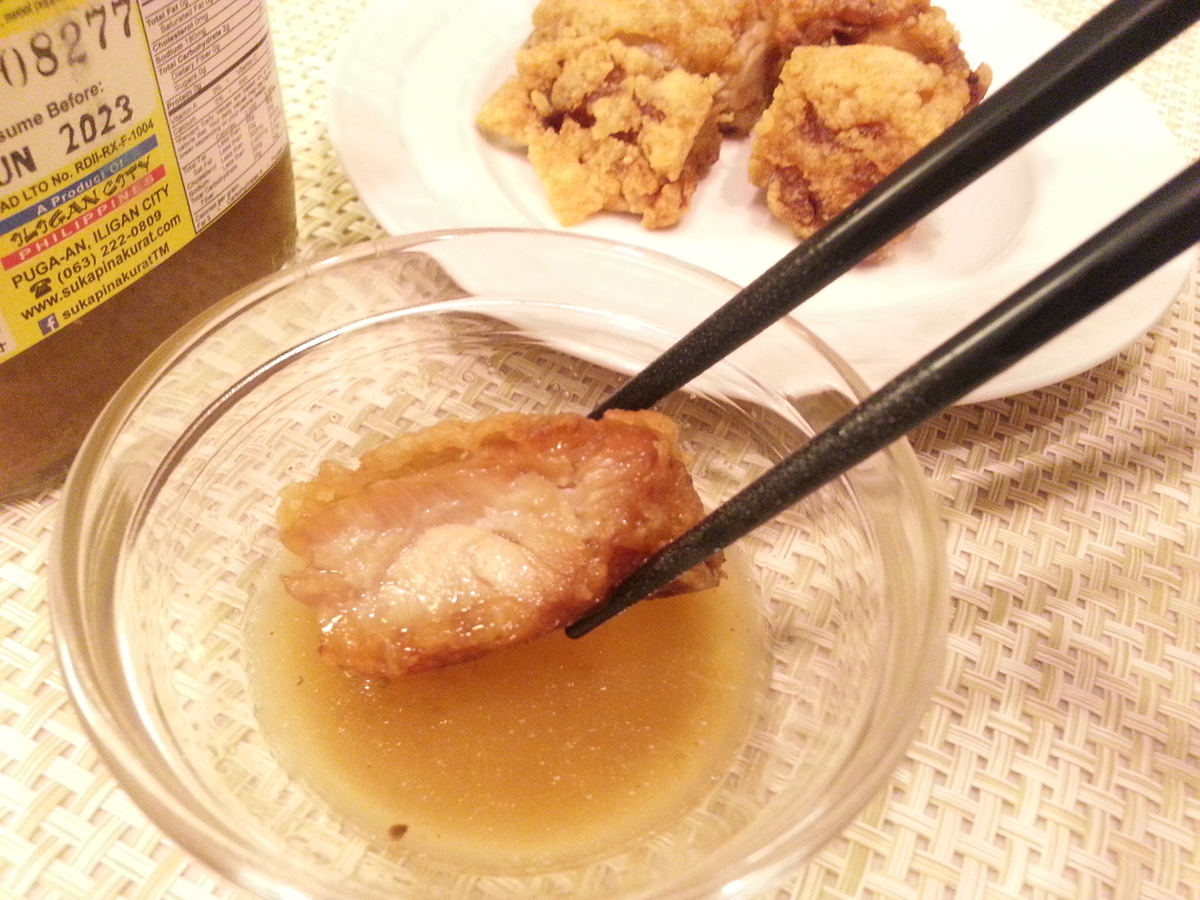
The sour spicy sauce goes well with the warm chicken. It also seems to help remove the smell of the meat. Delicious!
▼Check out coconut vinegar.
Salad chicken
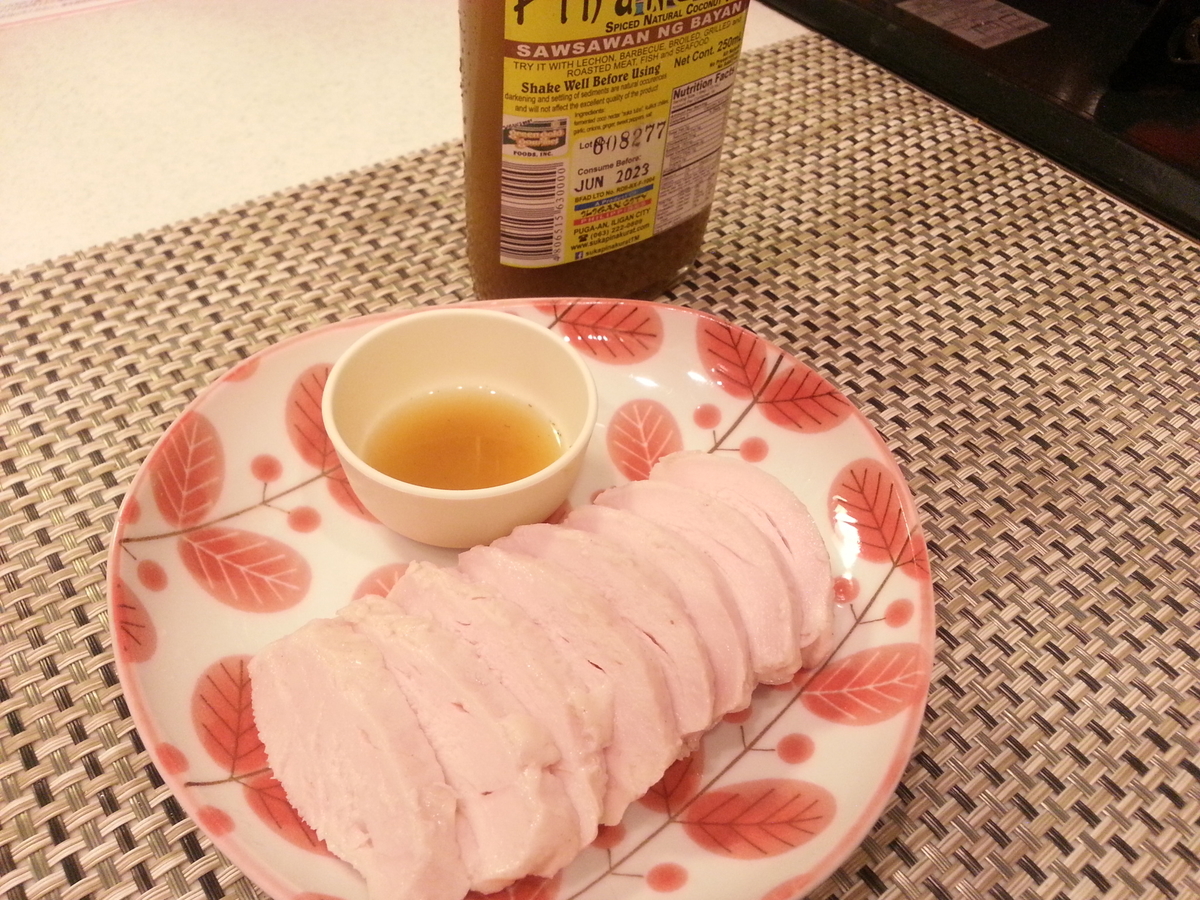
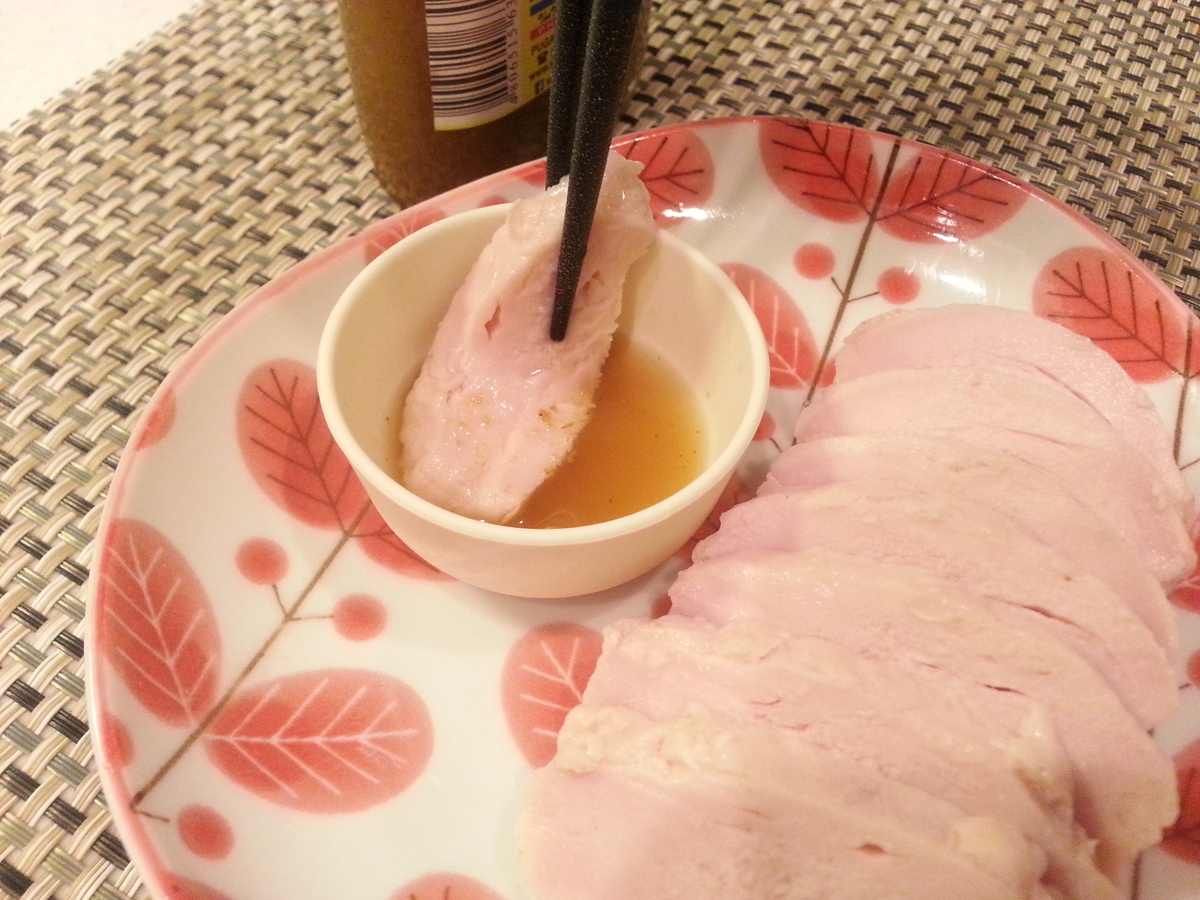
Fried fish
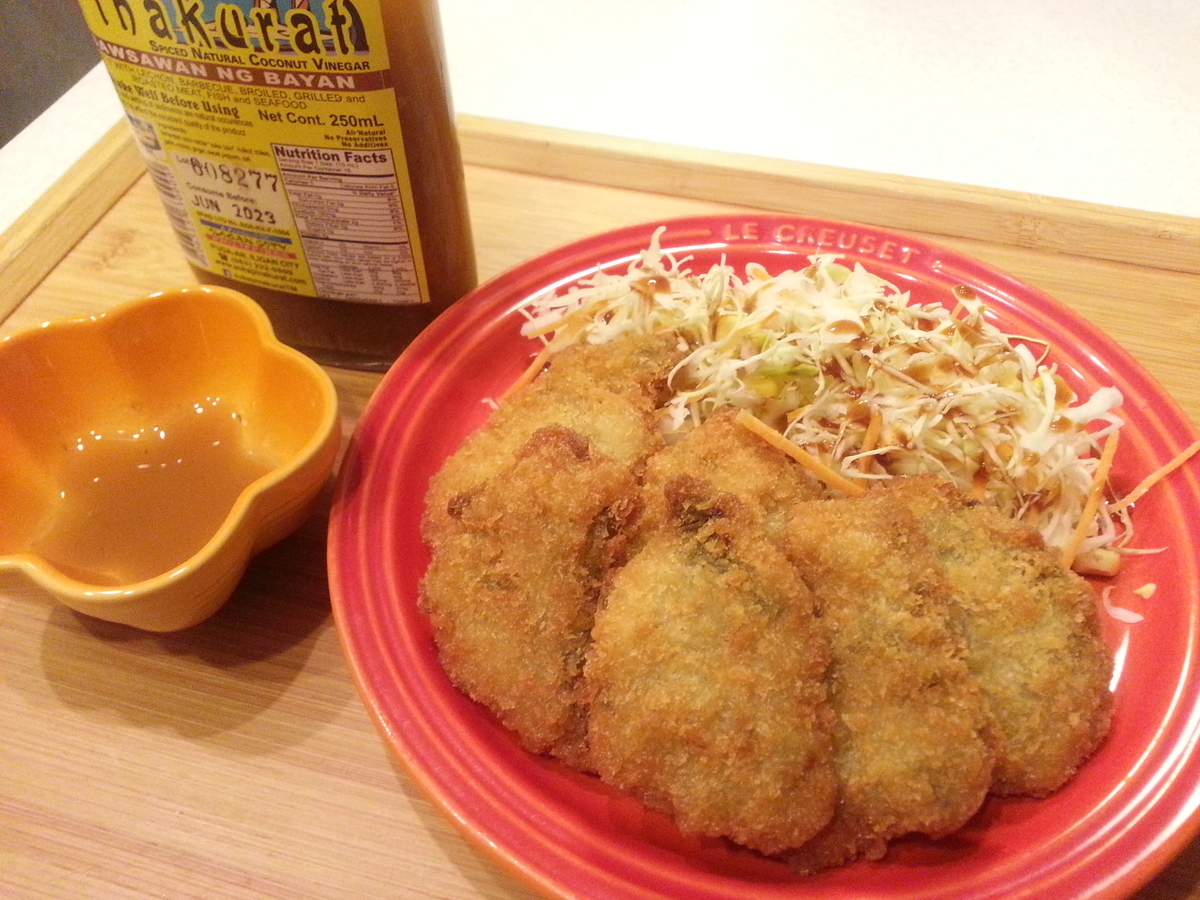
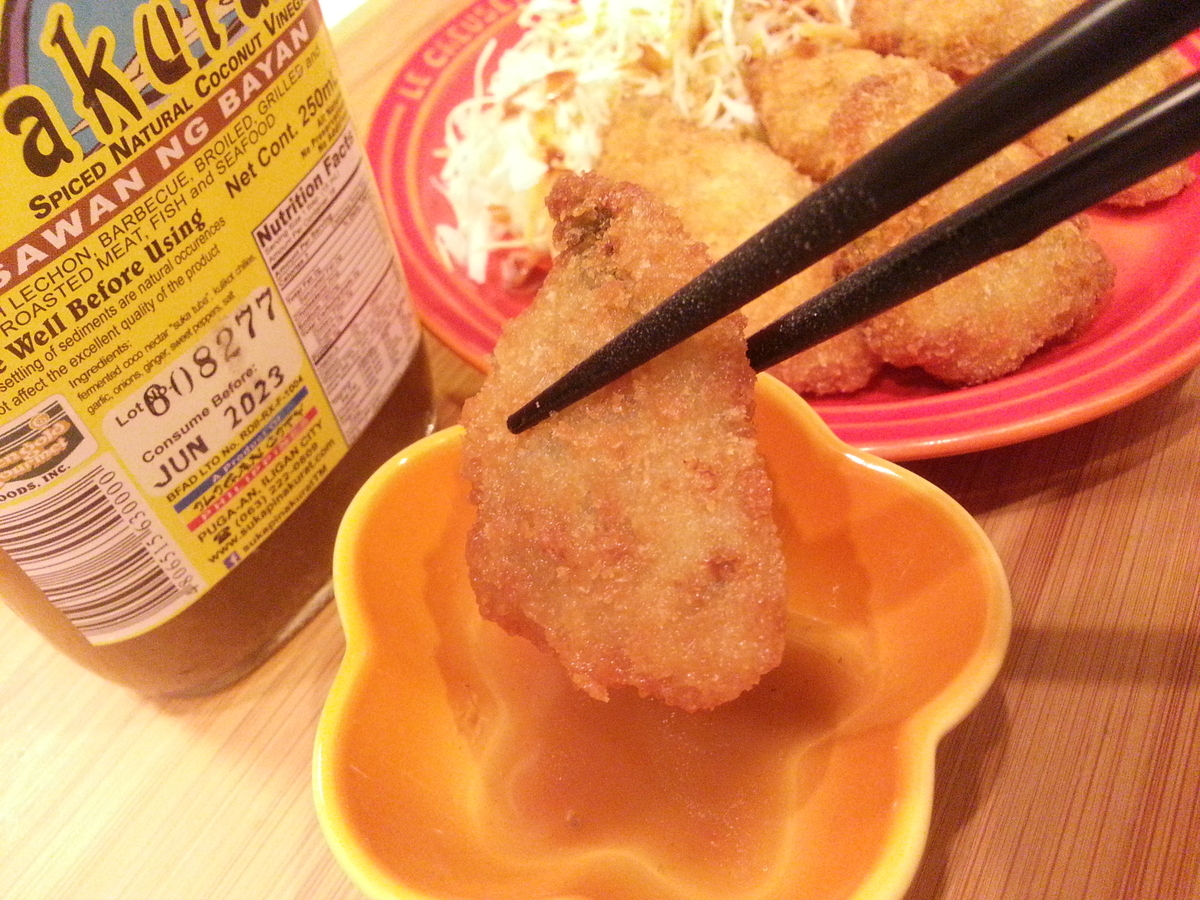
Marinated Salmon
You can also use it to marinate sashimi. Prepare salmon and onions. Make the marinade with coconut vinegar. Olive oil (1 tablespoon), coconut vinegar (2 tablespoons), sugar (1 teaspoon).

Once all the ingredients are mixed together, store in the refrigerator for the desired amount of time.
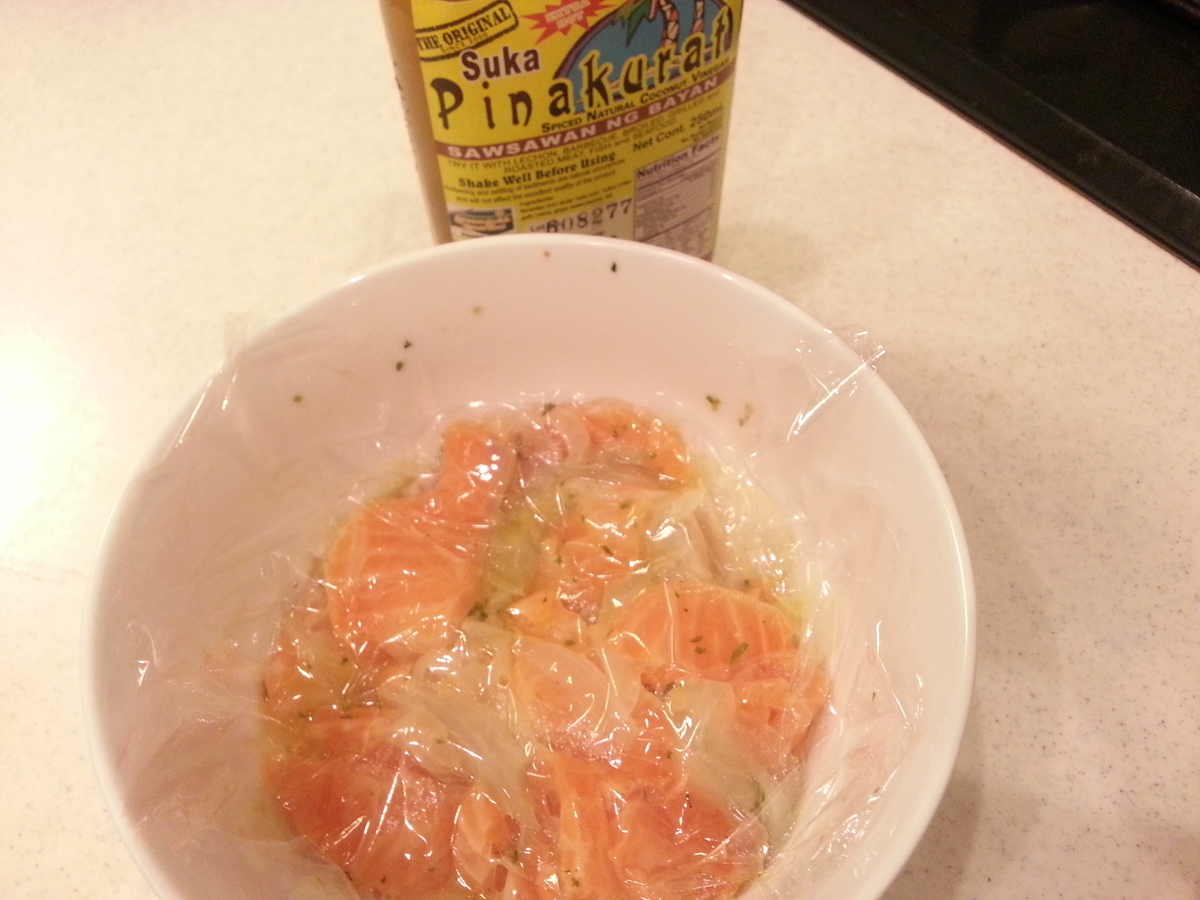
Finished marinated salmon with coconut vinegar♬
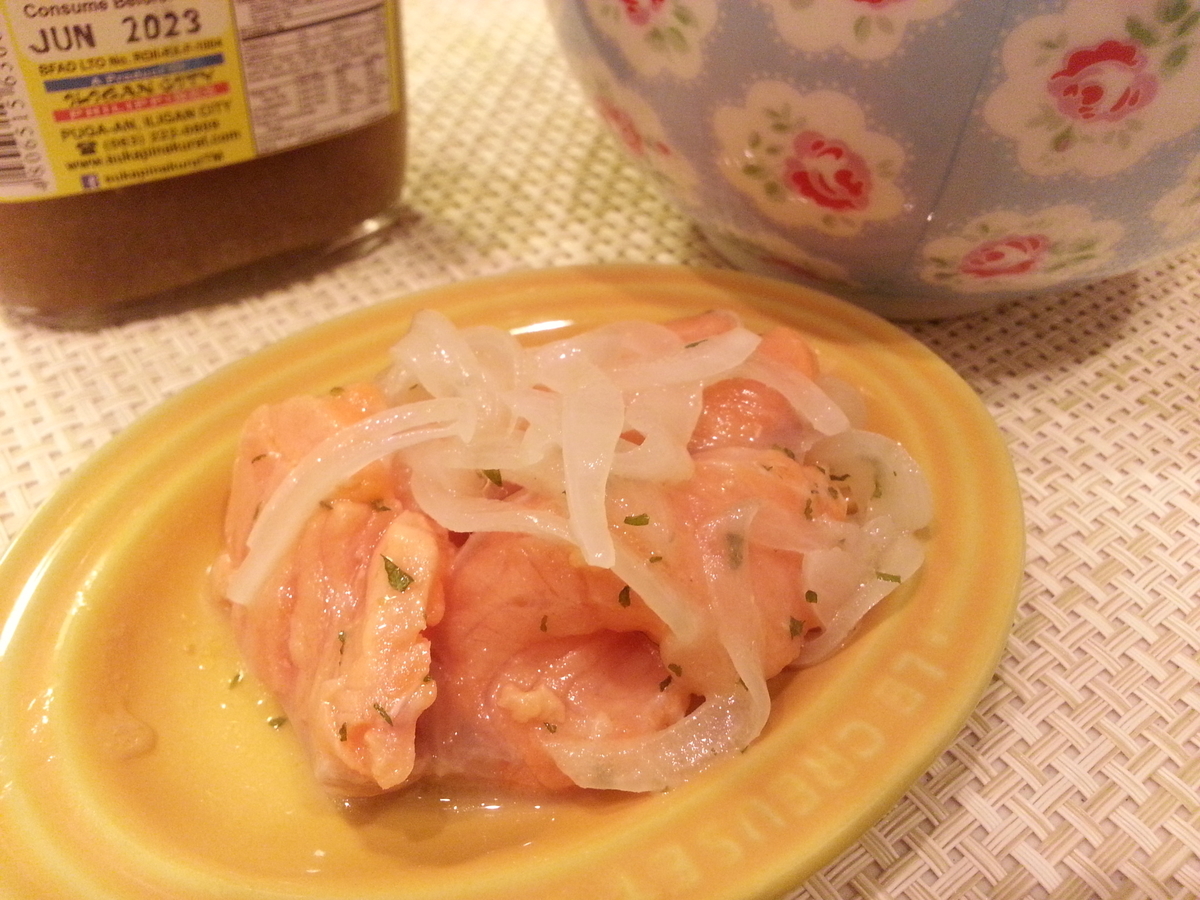
The spicy sauce makes an appetizing Asian-style marinade. Very tasty.
Fresh spring roll
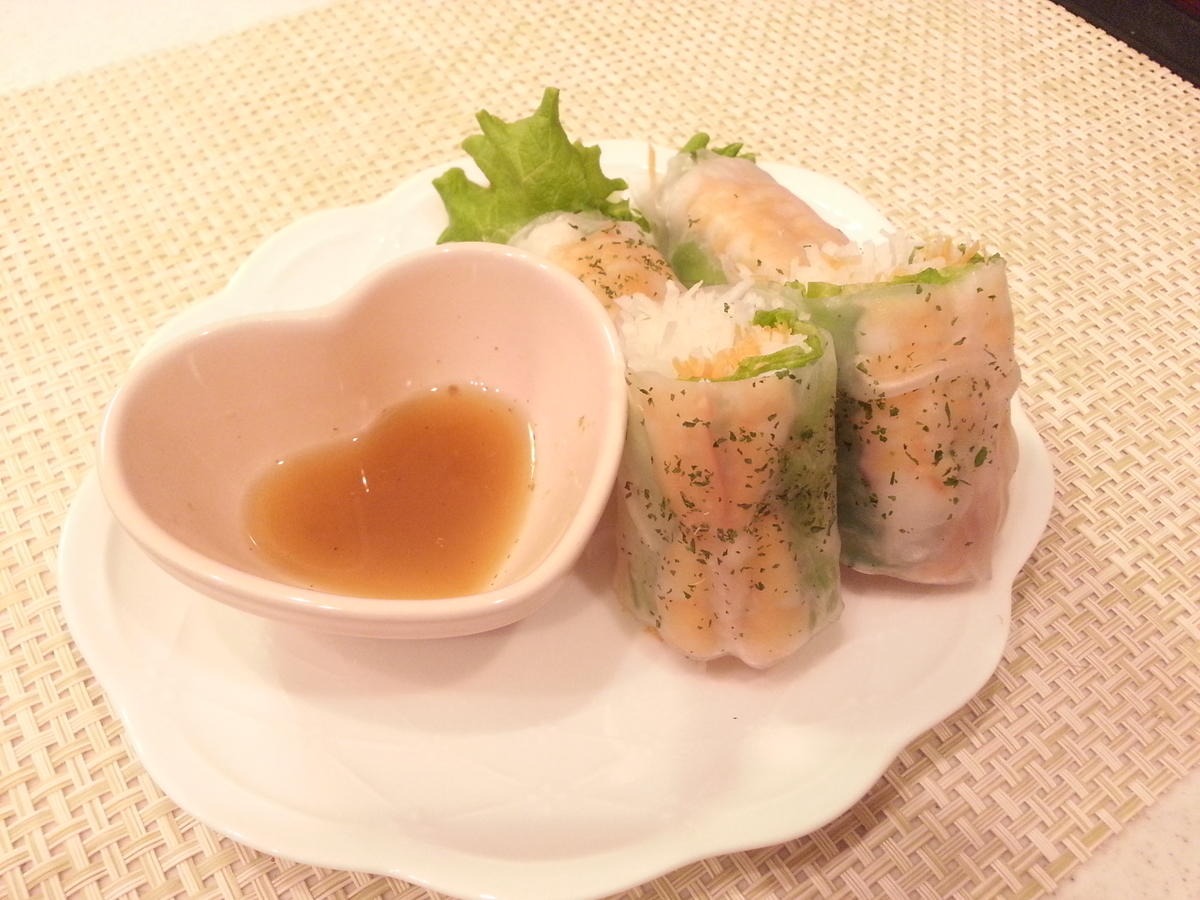
Ebisen (chips)
They are also delicious dipped in shrimp and other chips. If you like spicy, addictive chips!
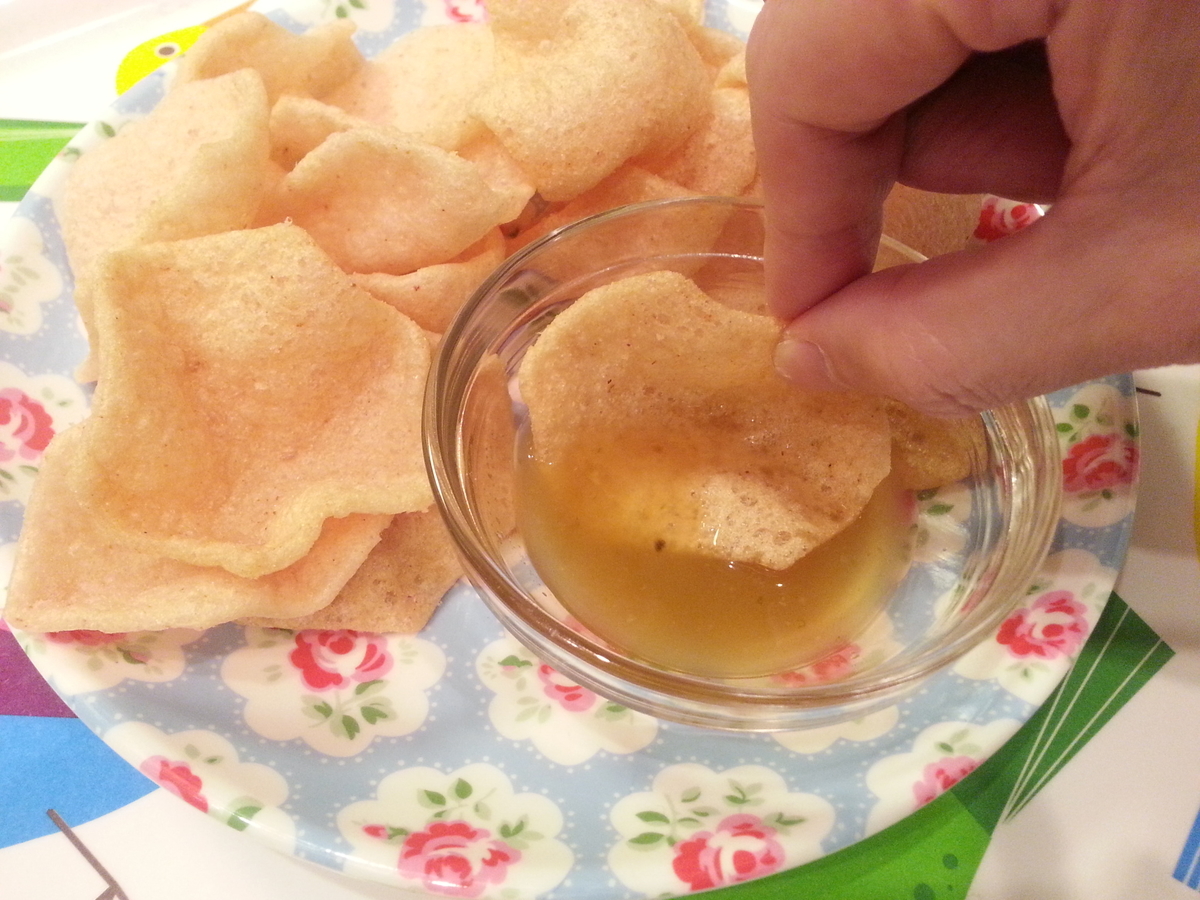
▼Check out coconut vinegar.
=スポンサーリンク=
Summary
In this issue, we introduced “Suca Pinakurat,” a soul food coconut vinegar from the Philippines. This vinegar is made from coconut, which is not so familiar in Japan. Spices such as garlic, ginger, and chili pepper were also used to give it a unique flavor. The spiciness is very high. Be careful not to soak it too much. It is a must-try for spicy food lovers.
How about this article?
▼How to make Filipino “Sinigang” Soup with Japanese ingredients.
▼How to make Filipino “Chicken Adobo” by using Japanese ingredients.


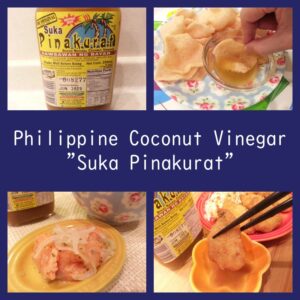
コメントお願いします(※は必須項目)
コメント一覧 (2件)
フィリピン料理には全く馴染みがなくソースに関しても全く知らなかったので興味深く拝読させていただきました。
生春巻きはsummer rollsなんですね。春巻きはspring rollsだと思っていたので生になるとsummerになるのが不思議な感じがしました。てっきりfresh spring rollsだと思っていました。そして生春巻きはベトナム料理かと思っていました。( ̄▽ ̄;)
こぴちょあさん
確かに生春巻きは fresh spring rollの方が自然ですね。有難うございます、変更しました(笑) フィリピン人はご飯が好きで、醤油が好きだから、共感できるんですよね~。食文化って国や地域で違うから面白いですよね。ときどき取り上げようかなぁと思っているところです。